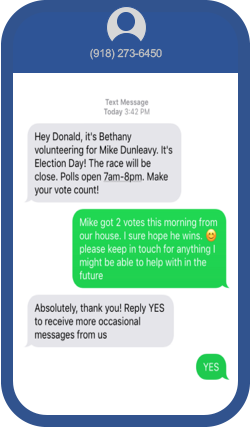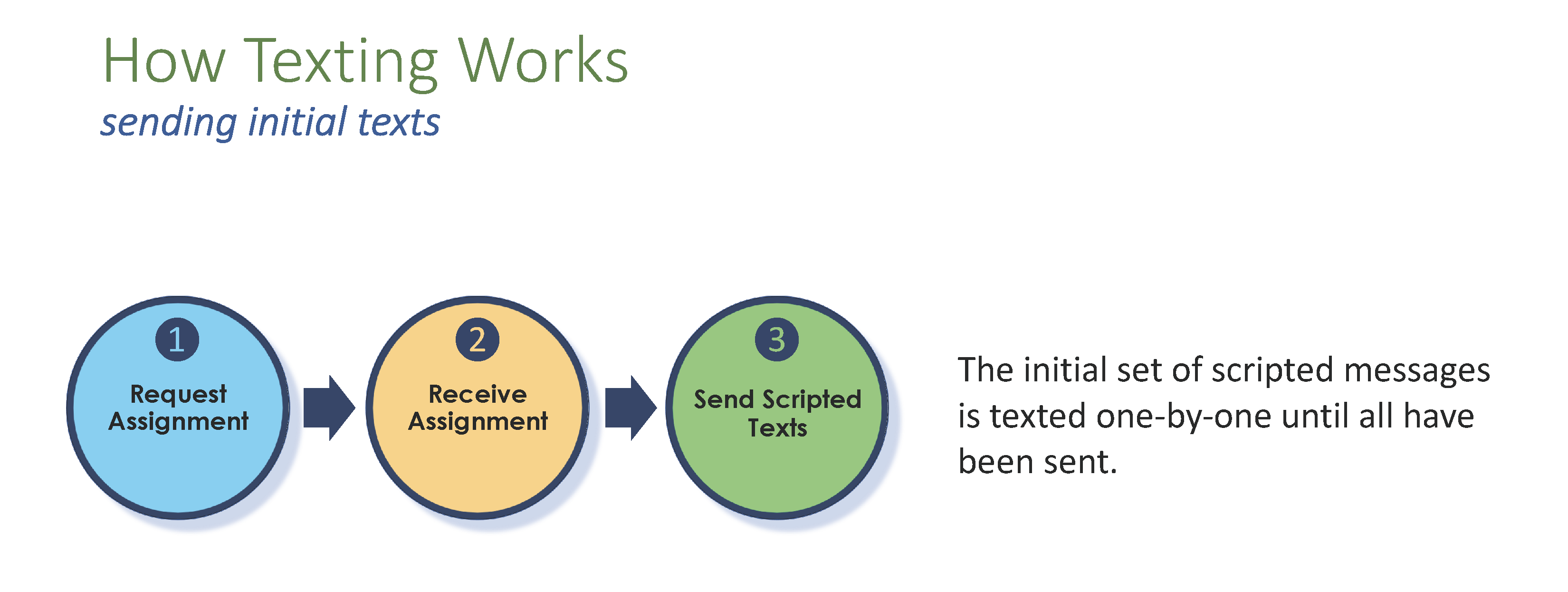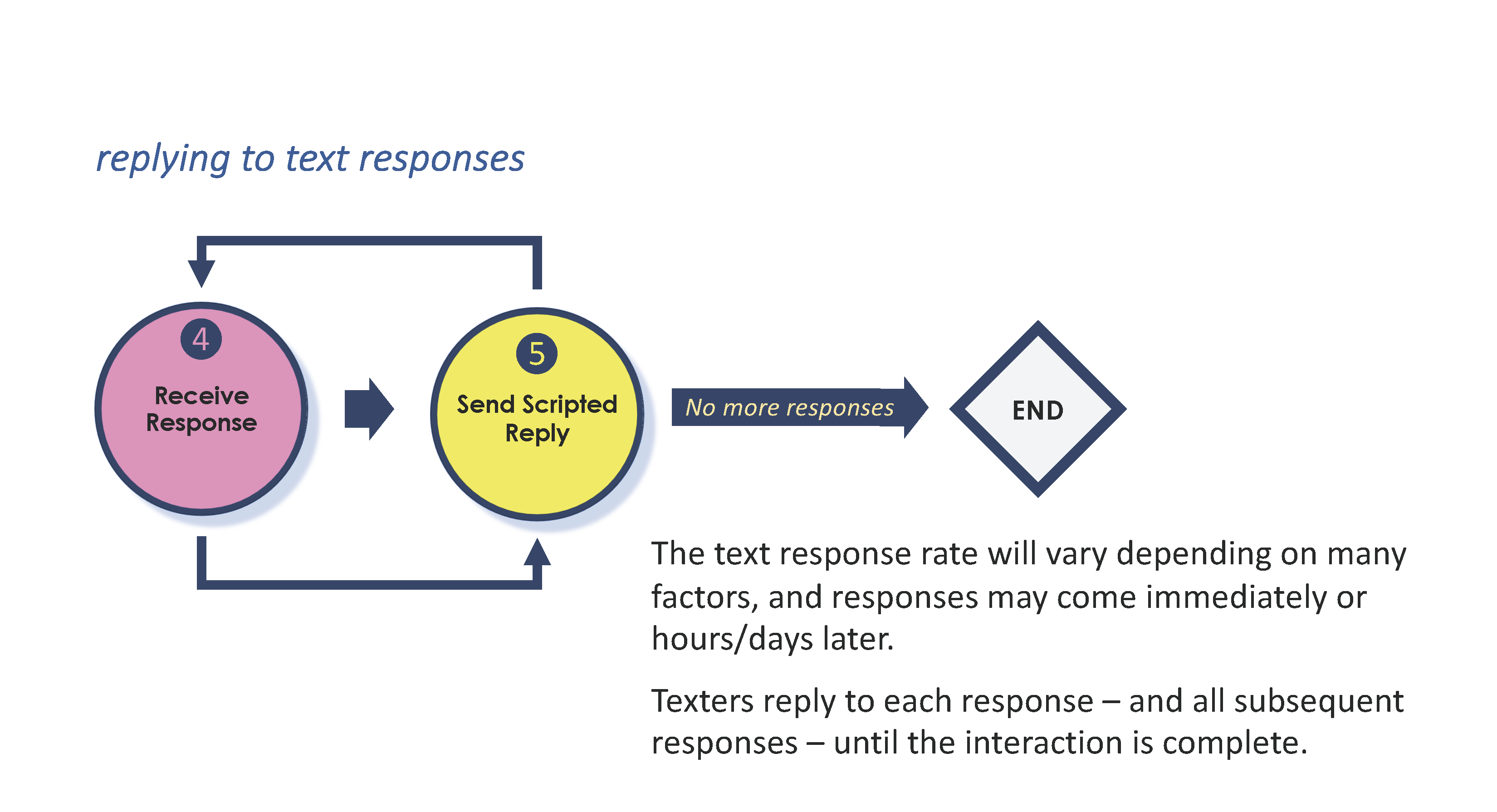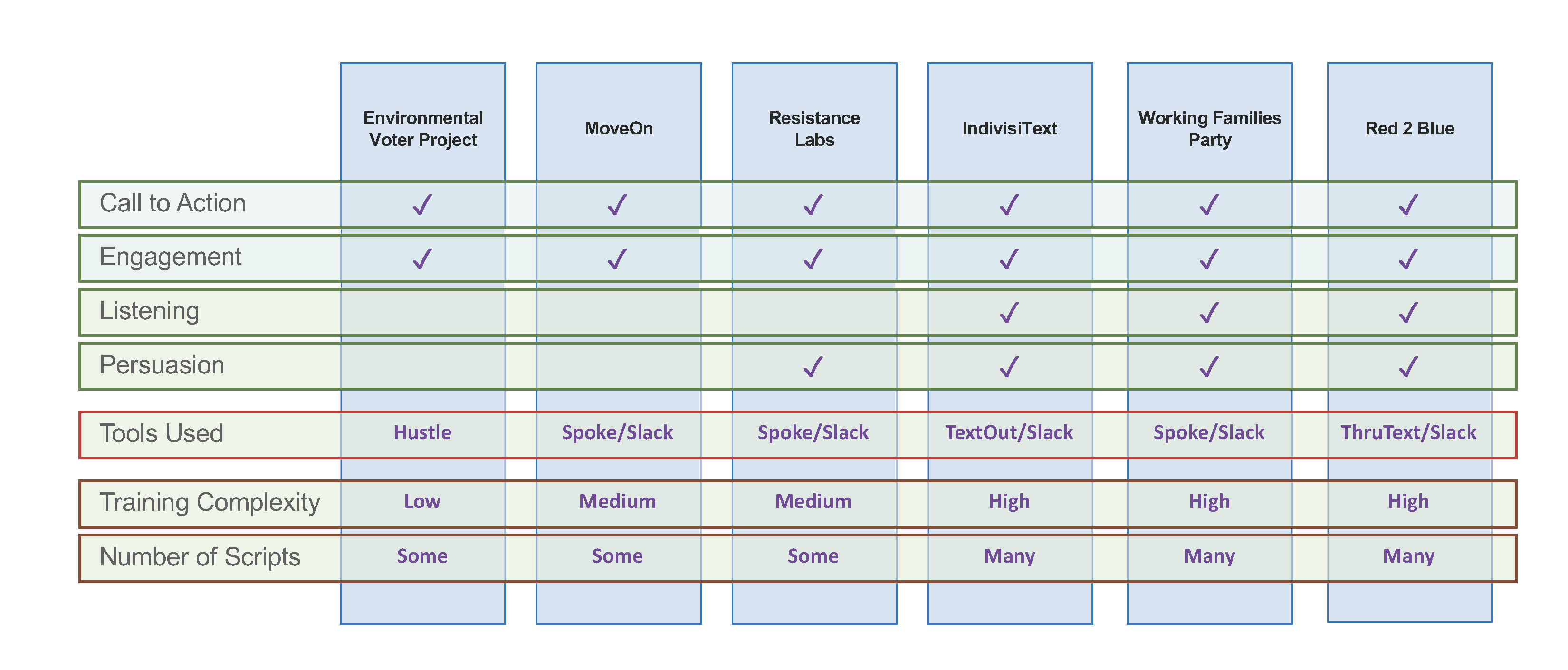
What is Texting?
Texting emerged as a prominent digital tool during the 2018 midterm elections as a great way for organizations to reach out to members and voters. Texting has proved to be efficient and effective in increasing voter turnout. Several new texting platforms have appeared in recent years enabling those who text to engage huge numbers of people easily. The way these platforms work is similar. Each organization enables volunteers to use its tools to send out scripted text messages to a huge number of people – all while keeping the volunteer’s personal information private. When individuals respond, volunteers engage in a personalized one-to-one interaction.
Texting Activism:
- Involves personal conversations
- Uses third-party applications to generate texts
- Keeps your personal information hidden (your phone number is never visible!)
- Generally works on multiple devices: computer, phone, or tablet
Why Text?
- Communicate with potential voters one-to-one anywhere in the country
- Transmit hundreds of texts in minutes
- Generate real results (for example, getting people to the polls or showing up at rallies) and
-
Text from home – or when not social distancing – from virtually anywhere
How can I get started?
Visit our Take Action: Texting page for Action Kits to get started with any of our partner texting organizations.



Texting Organizations
The texting organizations listed below are but a handful of those offering texting opportunities. Texting organizations may offer one or more texting campaign types and may not always have campaigns available. Texting Action Kits to help you get started with some of these organizations are available by clicking links under Getting Started below.
Texting Campaign Types
The purpose of the texting campaign can vary, based on the organization’s needs and where we are in the election season. Texting campaign types are listed below. In all cases, the basic scripts are provided, so you always will know how the organization would like you to respond, and the information you need to reply to the recipient’s questions.
- Call to Action: Mobilize text recipients to take a specific action on a specific date/time. Examples might include: Early Voting, Call Your Elected Legislator to Support a Bill, and Get Out the Vote
- Engagement: Invite text recipients to keep track of a campaign by opting in for updates; seek volunteers for campaigns or causes
- Listening: Interact with text recipients to understand the issues that matter most and how these relate to candidate positions
- Persuasion: Help to reinforce or convince a text recipient to support a candidate or issue. Examples might include gaining support for a political candidate or convincing the text recipient to run for office themselves.

